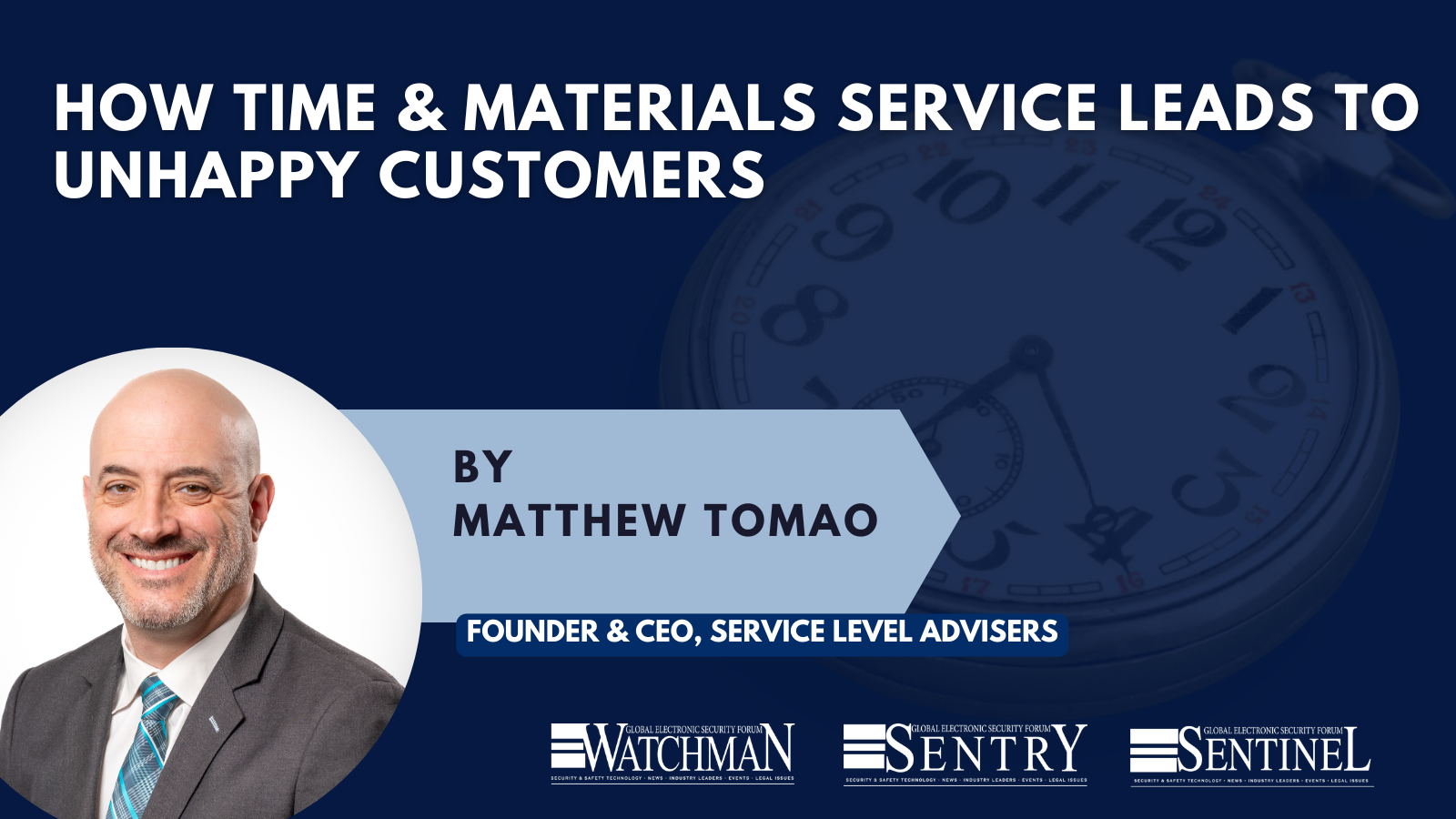
By: Matthew Tomao, Service Level Advisers, Inc.
Unhappy customers are being created if they are being serviced on a time and materials (T&M) basis.
You heard me correctly!
Contrary to popular belief, managing a relationship with a customer through the narrow lens of time and materials service ultimately results in missing the bigger picture. The bigger picture is the importance of deriving feedback from a customer as it relates to their experience interacting their provider’s staff. This feedback creates the ability to gauge their satisfaction, which is the most important indicator of a business’ longevity. It is nearly impossible to track this crucial indicator if the customer is being serviced on a T&M basis. Simply put, a customer relationship predicated by a T&M service agreement does not lend itself to customer satisfaction.
Tracking customer feedback with a customer on T&M generally begins with the servicing technician initiating a customer survey after the work has been performed. In a scenario where the service call is responding to a critical service issue, the last thing on the technician’s mind is soliciting feedback from an unhappy customer. An unhappy customer who probably hasn’t interacted with their servicing company since their original installation was completed.
A customer’s best interests are almost never being served when being serviced on a T&M basis. The technician is generally attending to the customer needs after a critical service issue has already taken place.
As service calls of this nature are usually received during the most inopportune times, the service coordinator is usually scrambling to find a technician willing to travel to a client site afterhours or late Friday afternoon instead of meeting a date for dinner at Applebee’s.
Now the customer is unhappy meeting with a stressed out technician who will likely not be able to determine how long it will take to resolve the issue on the spot, with worst case necessitating repeat service visits which will contribute to increased customer dissatisfaction.
Providing a service agreement which includes routine preventive maintenance ensures interaction with customers on a regular basis, creating a positive Service Relationship where the customer feels their best interests at heart. In the case of the beleaguered technician who missed the date at Applebee’s, the whole situation could have likely been avoided if a service agreement had been instituted to proactively address service issues before they reached the critical stage.
Minimizing customer dissatisfaction is so important that some businesses pay consumer satisfaction research firms such as J.D. Power nearly a billion dollars per year to provide them with actionable consumer intelligence data. This data is the currency which enables them to accurately gauge customer satisfaction and improve their buying experience.
Understanding that improving the customer experience turns satisfied customers into loyal customers is the Holy Grail of business. It is not uncommon for a business’s revenue to account for up to seventy-five percent from their existing customer base.
It’s probably common knowledge that a customer base which shows a high level of satisfaction is more likely to buy again from their current provider without shopping elsewhere. Reading between the lines, a satisfied customer is also more resistant to advances from the competition. In this vein, it’s imperative that any customer being serviced on a T&M basis is transitioned to a recurring service agreement model.
As happy customers lead to everything else you want from your business, you must shed the notion that you are taking advantage of them by offering service agreements. The fact is a manufacturer’s warranty is not for the end user, but actually the dealer. Additionally, a dealer loses money by servicing their customer on a T&M basis.
It is difficult to monetize T&M service because time and resources can better be spent elsewhere, such as sales and marketing. Do not lose out on the opportunity to create an equal Service Relationship with your customers by educating them on the benefit of a clearly defined set of standards which to properly align their expectations.
Matthew Tomao is an Army Veteran, and the founder and CEO of Service Level Advisers, a consulting firm that specializes in helping integrators build or improve their service agreement program in weeks, not months.

